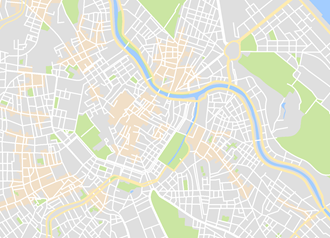Located at the junction of the Volga and Kama, Tatarstan is a bridge between the European and Asian part of Russia, a kind of crossroads of religious and cultural traditions of East and West; the unique historical experience of peaceful coexistence of two world religions: Islam and Orthodox Christianity.
Here is an amazing fusion of two cultures - Russian and Tatar, beautiful landscapes and ancient cities. There are City-island Sviyazhsk, Great Bulgaria - open-air museum, Pasternak’s Chistopol, old merchant Yelabuga, turbulent modern Nizhnekamsk and Naberezhnye Chelny, Raif - the pearl of Tatarstan and Kazan, which the medieval travelers called the "marvelous city", "the capital of the East."
Population
By the area Tatarstan is approximately equal to Ireland. Here, side by side, live Tatars (52%) and Russian (39%), Chuvash and Mari - more than 100 ethnic groups, about four million people.
Tatars are very hospitable people. For guests they put the best treats - sweet chak-chak, linden honey and, of course, sweet tea. "Inhospitable person is defective" - considered by Muslims. Guests are taken not only to entertain, but also to bestow gifts.
Cuisine
Tatar national cuisine is national and varied. Katyk, ball-may, and kabartma were inherited from the Bulgars, and complemented with Tatar chak-chak, ech-pochmak, Finno-Ugric cuisine gave dumplings, Chinese - tea, Uzbeks - pilaf, Tajik - Pahlavi.
The basis of nutrition is meat and dairy and vegetable food. Favorite Tatar meat is lamb and poultry. Tatars prepare their favorite drink - katyk of sour milk, and make from it sozmu - Tatar curds (cottage cheese).
Of the variety of dishes most typical are soups and broths (sulpa, togmac) - meat, dairy, and lean; flour baked goods - beleshi, peremyachi, bekkeny, ech-pochmaks, sumsa and other stuffed with meat, potatoes and cereals. Tea is served with sweets of sweet dough such as katlama, kosh-tele, chak-chak - mandatory meal at the wedding. From honey is prepared meal in honor of the birth of a child - mashed-alba, wedding delicacy - a ball-may. Sherbet - a sweet fruit and honey drink - is also used at the time of the wedding ceremony: the bride sends it to her guests, which after drinking sherbet put it on the tray money as a gift.
Special meal rules related to the Islamic religion. It is forbidden to eat the meat of swine, and some fowls - such as the falcon and swan. During Ramadan (the ninth month of the Muslim lunar calendar), all Muslims older than 12 years should keep 29-30 days lent - uraza that means a complete abstinence from food and drink during daylight hours. Also religion forbids wine and other alcoholic beverages.
The first state in the region was the Volga Bulgaria, founded in the late IX - early X century by Turkic tribes. Bulgaria for a long time remained the only developed state formation in the north-east of Europe. In the 922 as the state religion was adopted by Islam, then Bulgaria became part of the empire of Genghis Khan, and then became part of the Golden Horde. As a result of the collapse of the Golden Horde in the Volga region, a new feudal state - Khanate of Kazan was founded (1438). After the capture of Kazan in 1552 the troops of Ivan the Terrible, the Kazan Khanate ceased to exist and was attached to the Russian state.
In 1708, the territory of today's Tatarstan became part of the vast Kazan province, which extended the original boundaries of the north to Kostroma, in the east to the Ural Mountains, in the south to the Terek River in the west to Murom and Penza. Kazan maintains the status of the capital of the province for more than 200 years.
Before 1920 the current territory of the Republic of Tatarstan was not called either "Tataria" or "Republic of Tatarstan" either officially or unofficially. Kazan in the Russian part of the Kazan kingdom was called first, and later the Kazan province, and only in 1920 the Tatar Autonomous Soviet Socialist Republic was established on the initiative of Lenin. From 1992 to the present time is known as the Republic of Tatarstan.
The Republic of Tatarstan is located in the east of the East European Plain and is divided into three parts by valleys of the rivers Volga and Kama. The local sightseeing tours are very popular among tourists, because on the territory of Tatarstan is a lot of "historic cities", where preserved the architectural monuments, ensembles and complexes, which are historical and cultural monuments.
In 2006 it was developed the tourist route "Pearl Necklace of Tatarstan", consisting of two rings - Small and Large.
Small ring surrounds Kazan and passes through the territories of the municipal areas, adjacent to the capital of the republic: Zelenodolsk, Verkhneuslonsk, Laishevo, Pestrechinsk and Arsk. Each has a distinct culture, ethnicity, nature, history and architecture. Popular radial excursion routes: Kazan - Raifa, Kazan - the island-town Sviyazhsk, Kazan - Laishevo, Kazan - Arsk, Kazan - Kokushkino.
Big ring combines Kazan, Bolgar, Bilyarsk, Chistopol and Yelabuga. The greatest interest for tourists here have the historic and architectural museums-reserves (Kazan Kremlin, Bulgarians, Bilyarsk, Elabuga), excavations of ancient settlements (Djuketau, Bilyar, Suvar), as well as unique natural areas of the Volga-Kama reserve, Spassky reserve and Chistye Luga.

